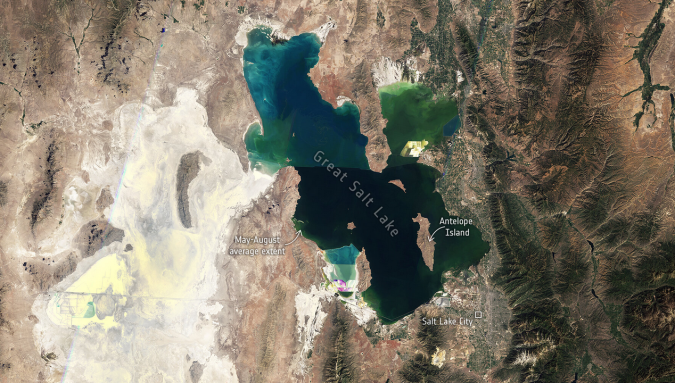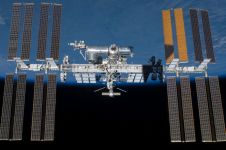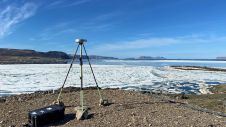Satellite Imagery Reveals How Utah's Great Salt Lake Is Disappearing
Utah’s Great Salt Lake dropped to its lowest recorded water level last month as a megadrought persists across the US southwest, forcing the fast-growing city to curb its water use. From space, satellite images show how water levels have fallen in the period from 1985 to 2022, exposing large expanses of lakebed.
根据来自美国地质调查, the Great Salt Lake’s surface water elevation fell to the lowest level since records began in the mid-1800s, to an average of 1,277m above sea level. As a result of this drop in water level, the lake has lost nearly half of its surface area from the historical average, exposing around 2,000 square kilometres of lakebed – an area the same size as Tenerife.
根据美国地质调查局的数据,现在该湖现在只有超过四分之一的水量。用水和气候变化燃料干旱是湖泊下降的两个主要原因。
The lake goes through seasonal cycles of water loss and replenishment after rain and snow melt fills it back up. According to officials, the water evaporation and depletion exceed the amount of water entering the lake. The lake’s water levels are expected to further decrease until autumn or early winter, when incoming water equals or exceeds the evaporative losses.
The satellite images below reveal how water levels have fallen from 1985 to 2022, exposing large expanses of the lakebed.


Make your inbox more interesting.Add some geo.
Keep abreast of news, developments and technological advancement in the geomatics industry.
Sign up for free












